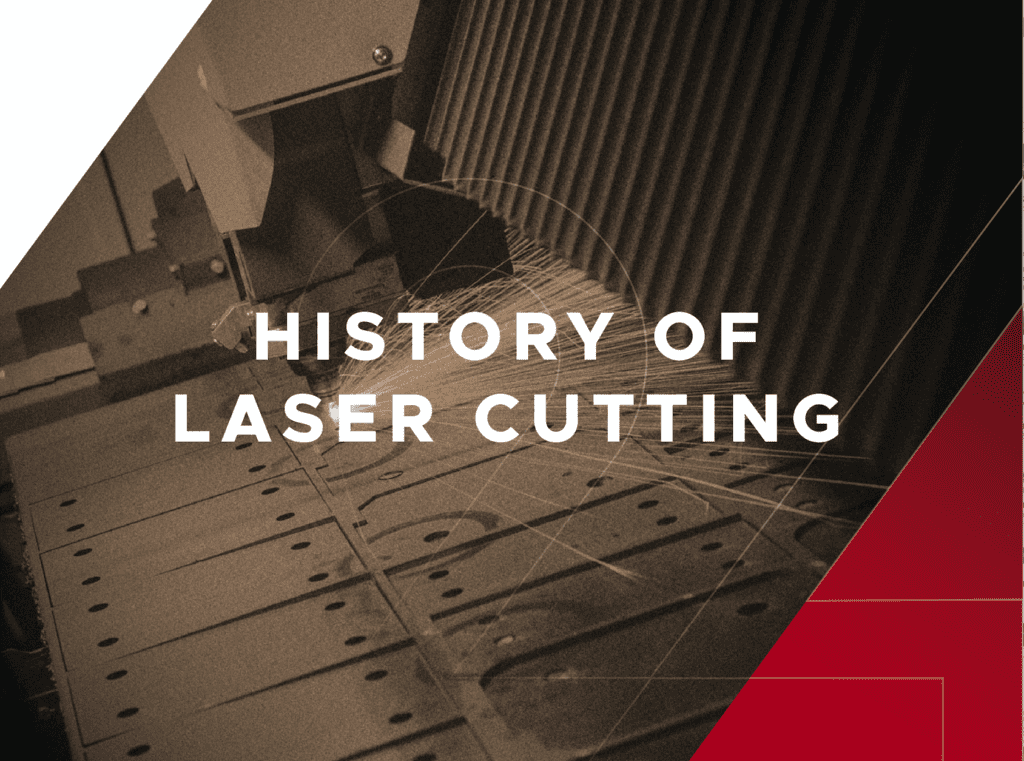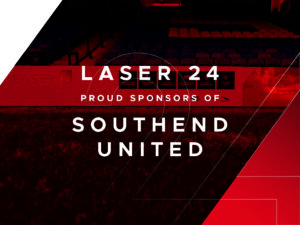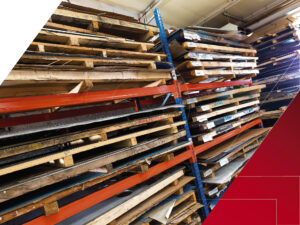Laser cutting is now an extremely popular process for industrial industries such as engineering, architecture, medical, marine, and construction. The advanced machinery and technology used within laser cutting means it may appear to be a fairly modern technology, however, its roots go back to the mid 20th century. Here we look at the history of laser cutting and how fibre lasers came to be one of the most powerful, precise tools in the world.
When did laser cutting start?
While people often think laser cutting is a modern process, it isn’t necessarily a new concept. In fact, in 2020 laser technology celebrated its 60th anniversary!
The first pulsing laser prototype dates back to 1960. Theodore Maiman made the first laser operate on 16th May 1960 at the Hughes Research Laboratory in California, by shining a high-power flash lamp on a ruby rod with a silver-coated surface.
In 1964, the carbon dioxide laser was invented by Kumar Patel at Bell Labs, the most powerful continuously operating laser of its time.
The new discoveries of the laser beam caused a stir both within the scientific community and the general public. Newspapers portrayed the laser beams as ‘death rays’ and people were unsure of this new, super technology. This fear was further promoted when Sean Connery was almost cut in half by a gold laser in a scene of the 1964 Bond film, Goldfinger.
When were lasers first used in production?
In 1967 came the first gas laser capable of continuous operation. A little closer to home in Cambridge, Peter Houldcroft used an oxygen assist gas to cut 1mm thick steel sheet with a focused CO2 laser beam. He realised that the combination of a focused laser beam and an oxygen assist gas had the potential to improve the precision and speed of the laser machine.
The first laser designed for the purpose of production was introduced by Western Electric in 1965, who used the machines to cut holes in diamond dies.
In August 1969, the Boeing Company conducted research on CO2 laser cutting of ‘hard’ materials. They concluded that the laser ‘could be an effective and economical cutting tool’. It was also around the early 1970s, that oxygen laser cutting was used to cut through various materials including metal, something that carbon dioxide lasers originally hadn’t been capable of.
By the mid-1970s, Western Electric were producing laser-based cutting machines at a rapid rate.
The introduction of fibre lasers
There are two main types of laser machines – carbon dioxide and fibre. CO2 lasers are cheaper, but fibre laser cutting is more efficient and acts with more precision. It also uses a lot less energy in the process.
Since its invention in 1963 by Elias Snitzer, the fibre laser required 20 years of development before the first commercial devices appeared on the market in the late 1980s.
The 1990s was the golden age of laser cutting development. More high-powered lasers were on the market, with the ability to cut in large volumes. In the early 2000s, fibre laser cutting was introduced to the commercial market.
The first fibre lasers for cutting reflective metals were introduced in 2008. The different laser beam conveying methods allowed cutting metals like aluminium, brass, copper, and galvanised steel
The Introduction of Bystronic Bystar
The Bystronic ByStar Fiber 3015 12kW is a fibre laser cutting technology that cuts even the thickest of metals with ease and handles large batches and high-volume jobs faster than ever before. This state-of-the-art Bystronic laser cutter, expertly handles thick and thin sheets and profiles, including mild steel, stainless steel, and aluminium up to a thickness of 30mm.
How Can We Help You with Your Next Project?
Laser 24 can laser cut a variety of metals and with our zero-handling process, this means that you receive the cleanest cut possible, without any manual handling damage. Our completely controlled automated process also means we are able to control the conditions under which it is cut, to produce the best quality parts for your projects. Combined with our press braking & finishing services, we can easily bend metals, grain, and de-burr.
We operate in several sectors including marine laser cutting, medical laser cutting, and laser projects for engineering. Thanks to our commitment to ongoing investment in world-leading machinery, we have the laser cutting & folding tools to deliver parts of exceptional quality at unbelievable prices, which is why we are one of the leading laser companies in the UK.
For more information on the services we provide across Essex, Kent, London, and surrounding areas, our capabilities, or to find out how we can help you with your next project, please call our team on 01268 733 883 or email [email protected] today.





